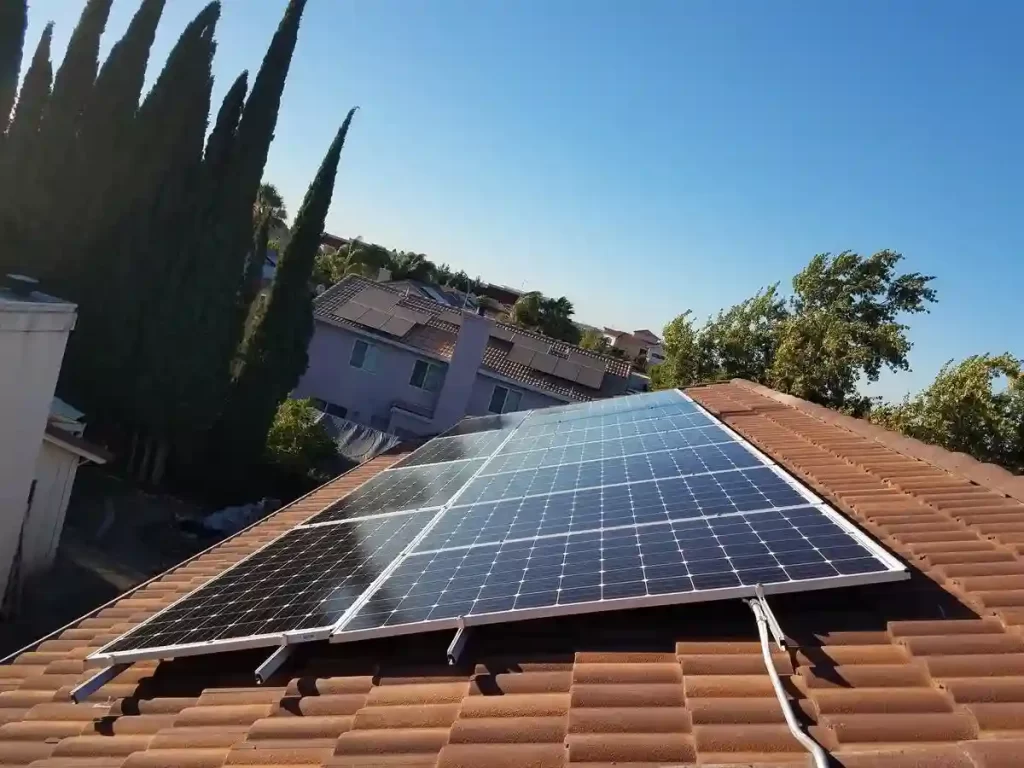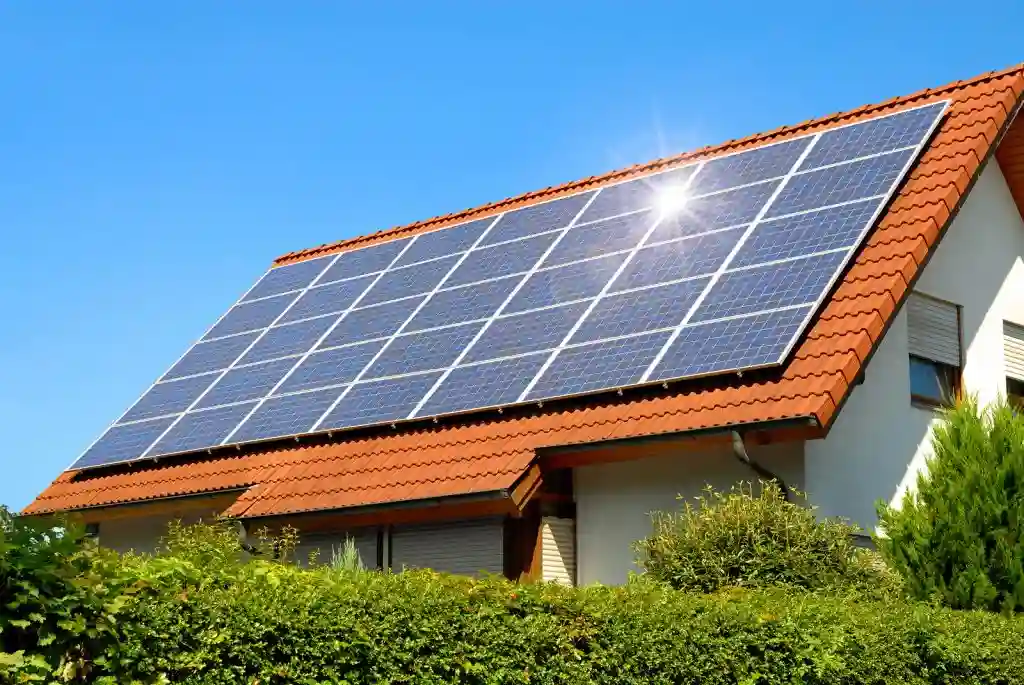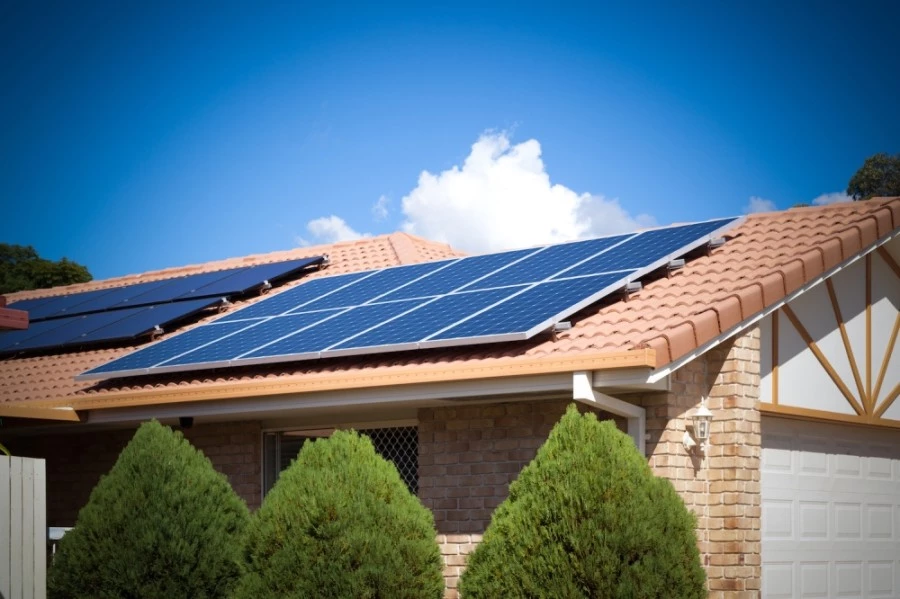In sunny Plano, Texas, harnessing solar energy is a hot topic. When it comes to setting up solar power, there are two main options: off-grid and grid-tied systems. Off-grid systems give you independence from the utility grid, making you self-reliant but requiring ample storage. Grid-tied systems, on the other hand, keep you connected to the grid and allow you to sell excess power back to it. The choice depends on your energy needs, budget, and eco-consciousness. Authentic Roofing will explore the pros and cons of each system to help you decide which solar path shines brightest for your Plano home.
Off-Grid Solar Systems:
Energy Independence:
Energy independence, in simple terms, is the ability to generate your own power and not rely entirely on external sources like the utility grid. It’s like having your little energy kingdom right at your fingertips. With energy independence, you become the boss of your electricity destiny. Solar panels on your roof, wind turbines in your backyard, or any renewable energy source can turn your home into a power producer. This not only grants you control over your energy but can also protect you during grid outages. Plus, it’s eco-friendly, as you reduce your reliance on fossil fuels. Energy independence isn’t just a trend; it’s a step towards a more sustainable and self-reliant future.
Load Management:
Load management is like the captain of your energy ship, helping you navigate the seas of power usage. In simpler terms, it’s about being smart with your electricity consumption. You wouldn’t want all your gadgets and appliances going full throttle at once, overwhelming your energy supply. It’s like orchestrating a well-choreographed dance of devices, making sure they don’t trip the circuit breaker. Whether you’re on or off the grid, load management involves spreading out your energy use, prioritizing essential appliances, and maybe even setting timers or using smart home tech to control when things turn on. This not only saves you money but also ensures that you have power when you need it the most, even during cloudy days or when the wind isn’t blowing for those with renewable energy setups. So, in a nutshell, load management is all about being the maestro of your electricity symphony.



Initial Investment:
The initial investment in any major endeavor can be a bit like taking a deep breath before a big plunge, and the same goes for solar power. When you decide to go solar, there’s an upfront cost involved in setting up your solar panels and related equipment, which holds true for both off-grid solar solutions for Plano residences and traditional setups. It’s kind of like buying a ticket to a green energy future. This cost covers the solar panels themselves, inverters, installation, and any necessary permits. While it can feel hefty at first, the good news is that over time, you’ll likely see significant savings on your utility bills, and in some cases, you might even qualify for tax incentives or rebates. So, yes, there’s an initial investment to consider, but it’s an investment that can pay off both financially and environmentally in the long run. Think of it as planting a tree that will bear eco-friendly fruit for years to come.
Space Requirements:
- Roof Space: The most common location for solar panels is your roof. You’ll need sufficient unshaded roof space that faces the right direction (usually south for maximum sun exposure). In Plano, having a roof with the right orientation can be a significant factor.
- Panel Size: Solar panels come in various sizes, so the space you need depends on the wattage and size of the panels you choose. High-efficiency panels require less space to generate the same amount of power.
- Tilt and Orientation: The angle and tilt of your panels can affect space requirements. Fixed panels need more space compared to adjustable panels, which can be tilted for better efficiency.
- Ground-Mounted Systems: If you have ample space on your property, you can install ground-mounted solar panels. This offers flexibility in panel orientation and can be ideal if your roof space is limited.
- Shade Considerations: Avoid shading from trees, nearby buildings, or other obstructions that can reduce the space efficiency. Shaded panels are less productive.
- Local Regulations: Be aware of any local zoning regulations that may impact the space you can use for your solar installation.
- Aesthetics: Some homeowners might be concerned about how solar panels affect the look of their property, and this can influence the space chosen for installation.
- Maintenance Access: Ensure there’s enough space for regular maintenance and cleaning, especially if you opt for ground-mounted panels.
- Future Expansion: If you plan to expand your solar system in the future, consider the available space for potential growth.
Backup Generator:
A backup generator can be your solar system’s trusty sidekick, especially if you’re going off-grid or live in an area where cloudy days or storms can disrupt your solar power supply, and even when dealing with issues like handling solar panel inverter grounding problems. Think of it as your power insurance policy. When the sun takes a break or your batteries run low, a backup generator kicks in to keep your lights on and appliances running. It’s like having a reliable friend who shows up when needed most. You’ll need to invest in the generator itself and ensure you have a fuel source, whether it’s gasoline, propane, or natural gas. While it’s an additional expense, it’s a reassuring safety net, ensuring you won’t be left in the dark during extended periods without sunlight or when your battery storage runs low. So, if you’re planning to go the extra mile for uninterrupted power, a backup generator might be your solar system’s best buddy.



Maintenance:
Maintenance for your solar solution is a bit like taking care of a valuable asset – you want it to keep performing at its best. The good news is that solar panels are generally low-maintenance. Think of them as your set-and-forget energy buddies. They don’t have moving parts, so there’s less that can go wrong. However, a little TLC is still essential. You’ll want to periodically clean the panels to remove dust, dirt, or bird droppings, especially in a dusty place like Plano. Also, keep an eye on the wiring and connections to ensure everything’s snug and secure. Think of it like checking the oil and tires on your car. If you’re using a grid-tied system, your utility provider may even do most of the monitoring for you. If you have a battery system, be sure to maintain those as well. While it’s not a daily chore, regular checks and occasional cleaning can help keep your solar system humming along, generating clean, green energy for years to come.
Grid-Tied Solar Systems:
Continuous Power:
Continuous power is like the heartbeat of your home, ensuring the lights stay on, the fridge keeps your groceries cool, and your devices stay charged. It’s the backbone of convenience in our modern lives. Grid-tied solar systems excel in providing continuous power because they seamlessly tap into the grid when the sun takes a nap. It’s like having a reliable safety net. So, even during those cloudy days, you won’t even notice the difference – your electricity keeps flowing. This is especially reassuring in places like Plano where unpredictable weather can cast shadows on your solar panels. So, with a grid-tied system, you can enjoy the best of both worlds: clean, green energy and uninterrupted power, making it a popular choice for many homeowners, with the added benefit of solar panel integration with residential roofing.
Cost Savings:
Cost savings with solar power are like finding money in your pocket you didn’t know you had. When you invest in solar panels, you’re essentially prepaying for a chunk of your future electricity, often at a lower rate than what you’d pay to your utility company. It’s like locking in a discount on your power bill. Over time, those savings can really add up, making your wallet a bit happier. Plus, in places like Plano, with abundant sunshine, the potential for savings is even greater. And, if you’re part of a grid-tied system, you might even earn credits on your bill for excess energy you feed back into the grid. So, not only are you cutting your own costs, but you’re also helping the environment by reducing your reliance on fossil fuels. It’s a win-win for your bank account and the planet.
Regulatory Considerations:
Regulatory considerations in the world of solar power are a bit like the rules of the road when you’re driving. They’re there to keep things safe and organized. In Plano and most places, you might need permits and approvals to install solar panels, and these can vary depending on your location, homeowner association, and local regulations. It’s a bit like getting your driver’s license; it takes a little effort, but it’s necessary. Additionally, if you’re part of a grid-tied system, there are usually rules and policies in place to govern how you can sell excess energy back to the grid and how you’ll be credited for it. Think of it as understanding the road signs and traffic rules – knowing what you can and can’t do. It’s a good idea to research the regulations in your area and perhaps consult with a solar professional to help navigate this aspect of your solar journey.



Size Flexibility:
- Scalability: One of the great things about solar systems is their scalability. You can start small and expand as your needs and budget grow. It’s a bit like building with LEGO blocks; you can add more panels over time without tearing down what you’ve already set up.
- Budget-Friendly: Starting with a smaller installation can make solar power more budget-friendly. It’s a bit like dipping your toes in the water before taking the plunge.
- Energy Needs: The size of your system can be tailored to your specific energy needs. If you have a large family with high energy consumption, you might opt for a bigger system, while a smaller household can go with a more modest setup.
- Roof Space: Your available roof or ground space plays a big role in determining the size of your solar system. In Plano, where you have plenty of sunny days, making the most of available space is crucial.
- Energy Goals: Consider your environmental goals. If you want to go completely green, a larger system might be necessary to cover all your electricity needs.
- Incentives: Some financial incentives, like tax credits, are often tied to the size of your system, so that can influence your decision.
- Future Planning: Think about your future energy needs. Are you planning on getting an electric vehicle, for instance? If so, you might want a larger system to accommodate increased electricity consumption.
- Resale Value: A well-sized solar system can add to your home’s resale value, making it a good investment.
FAQ’s:
Which is better grid tie or off-grid solar system?
The choice between a grid-tied and an off-grid solar system depends on factors like energy independence, budget, and your location; there’s no one-size-fits-all answer.
What are the disadvantages of grid-tied solar systems?
Disadvantages of grid-tied solar systems include dependence on the grid for power during outages and potential limitations due to local regulations and policies.
Can you go off-grid with solar in Texas?
Yes, it is possible to go off-grid with solar in Texas, but it requires careful planning and adequate energy storage.
Can a grid-tied solar system work off-grid?
A grid-tied solar system typically cannot work off-grid without energy storage (batteries) due to its reliance on the grid for excess energy and backup power.
Why off-grid is better than on grid?
Off-grid can be better for those seeking energy independence and remote locations, but it often involves higher initial costs and more maintenance.
CONCLUSION:
In conclusion, choosing between off-grid and grid-tied solar systems in Plano boils down to your unique needs and circumstances. Off-grid systems offer energy independence but come with higher initial costs and maintenance, making them suitable for remote locations. In contrast, grid-tied systems provide continuous power and cost savings, but they are reliant on the grid and subject to regulations. Whether you prioritize self-sufficiency or cost efficiency, carefully weigh the pros and cons to determine which solar path aligns best with your goals, budget, and environmental aspirations in sunny Plano.

